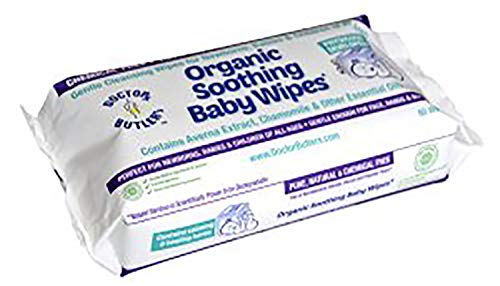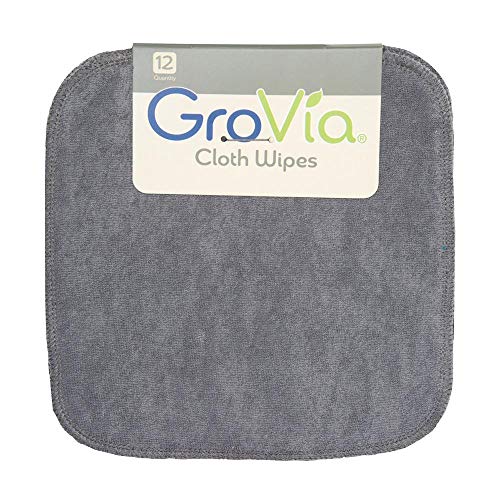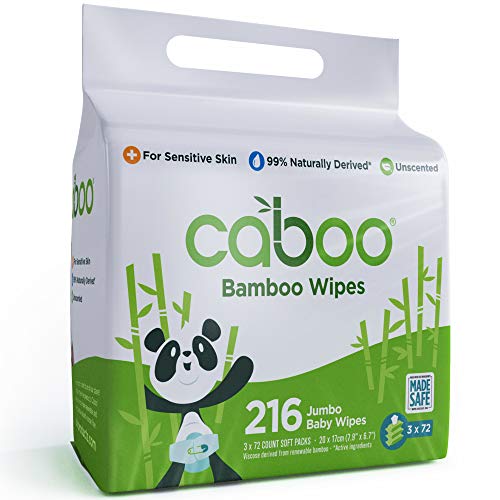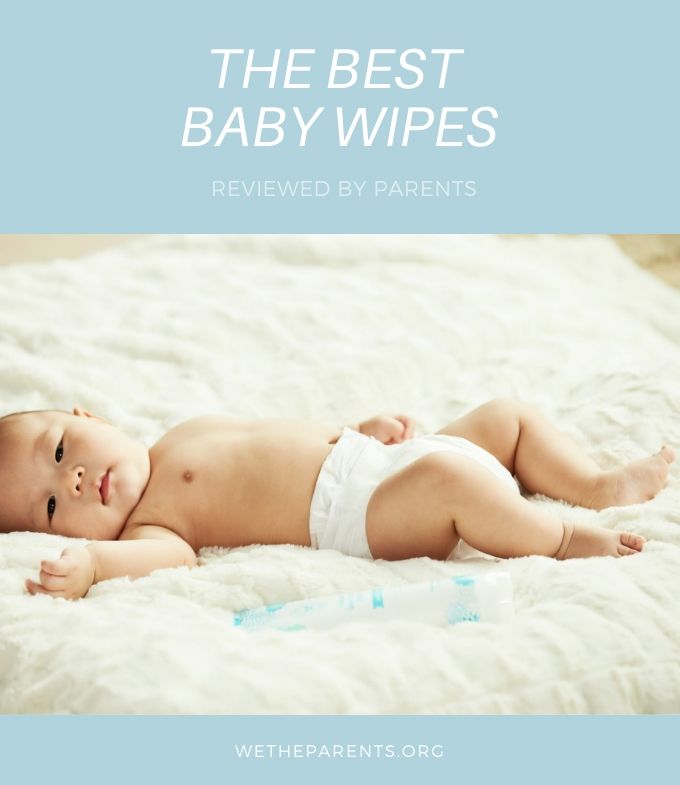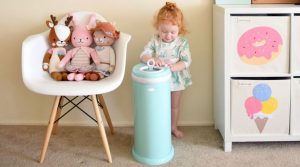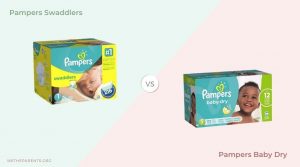With new parenthood comes new challenges. One of the first, of course, is cleaning infant poop messes and keeping babys’ behind sanitized, a task that requires the constant use of baby wipes. For those now preparing for the job of changing diapers and wiping babys’ bottom, learning more about baby wipes is critical. These products vary widely in terms of materials, thickness, comfort, and moisture content.
Here, we offer advice about choosing the best baby wipes that will keep your little bundle of joy clean and infection free. There are loads of brands and styles on the market, so we hope the following buyer’s guide and product reviews will help you make this important choice.
Buyers’ Guide
We believe those seemingly endless parenting chores are best done cheerfully. That said, you want to be sure your newborn’s bottom stays clean and free from rash and infection! Many factors come into play here, the most important being the type of baby wipes to use. The material, the added fragrance component, the thickness . . . the list goes on and on.
What are wipes made from?
They’re nice and soft, brilliant white in color, and generally smell like heaven. However, we usually don’t think much about the ingredients until after we’ve used sanitary wipes, then we begin to wonder if the material is safe for contact with an infant’s behind. Well, most baby wipes are made of polypropylene, a specific polyester fiber, wood pulp, cotton, or rayon fibers. In addition, the wipes may also contain special additives that act as a preservative to keep mold and bacteria at bay.
It’s very easy to think that, because it’s on the store shelf or available for purchase online, the product must have been given the thumbs-up by every consumer on the planet. One major problem with this, however, is that my baby’s posterior skin is different from the skin on yours. Keep in mind that some baby wipes do contain chemicals and may cause skin irritation in your little ones. If your baby has a known allergy or sensitivity, it would be best to check the baby wipes with your pediatrician. 1Rodriguez, K. J., Cunningham, C., Foxenberg, R., Hoffman, D., & Vongsa, R. (2020).The science behind wet wipes for infant skin: Ingredient review, safety, and efficacy. Pediatric Dermatology.
onlinelibrary.wiley.com
To summarize, consider:
- Softness
- Thickness
- Absorbency
- Doctor’s recommendation
Editor’s Note:
If your child’s bottom skin is already irritated, it is best to stay away from baby wipes until the skin is healed. Mild soap and warm water on a soft washcloth is preferable to clean the irritated skin.
Related: Pampers Swaddlers vs. Cruisers (5-mins. Decision Made.)
Medicated, sanitized, and hypoallergenic?
Most baby wipes that contain ingredients labeled as ‘medicated’ are safe for all skin types. Wipes are manufactured in a sort of laboratory setting, a factory room where the air is constantly filtered, in order to keep unwanted foreign agents from settling into the wipe material. Once the product is packaged, it’s like a can of green beans. Nothing from the outside can get in until the product is opened.
Color additives can be added without FDA approval, but if the wipes contain any sort of antibacterial ingredient or something designed to kill germs, they are considered to have drug status and, therefore, must be approved for use. We encourage you to look at all the labeling information on the company website before ordering online, or, if you’re at the store, to check the facts specifics on the packaging.
We prefer to look for plant-based ingredients whenever possible. Some fragrance additives are actually made from natural sources, such as sunflower, cranberry, tomato, and even raspberry seed. We are also check carefully for unwanted additives such as sulfates, artificial dyes, and parabens.
The important things to look for are:
- Moisture content
- Antibacterial ingredients
- Natural vs. artificial dyes and fragrance ingredients
Special formulas for sensitive skin?
Because our baby’s skin is smooth and without wrinkles, (and so soft it can almost make us jealous!) we need to find specific products that handle the job without abrasion or the promotion of rash. Since a baby’s skin isn’t yet fully developed, we need to avoid products containing harsh chemicals, allergens, and non-natural cleansers. We recommend soft cotton wipes with medicated additives if the baby is prone to rash or skin discoloration. If its skin is prone to turning red easily when the baby is bathed, we suggest you use a softer, thicker cloth wipe when changing the diaper.
Wipes are put through rigorous testing before they arrive on the store shelves. To get an idea of how manufacturers test these products, give this page a quick viewing.
How many will I use?
Time to face the music. Your newborn will poop more than once a day! Even more than twice a day! So you’ll need to be fully armed with wipes. You’ll use them in the morning, in the afternoon, in the evening, and at 3:00AM. We suggest an average of 10 wipes per day, and that’s assuming you only use one wipe per changing session. Now, multiply that by 30 days per month, which means you’ll need around 300 wipes per month. Fortunately, most wipes come in packages containing at least five or six dozen units, not forgetting that bulk buying will save you money.
One thing to consider, however, is how wipes are packaged. Many brands have smaller packets inside the main box containing as many as a dozen wipes. Wipes that are medicated or contain germ-killing additives are moist and will dry out very quickly. In other words, only open what you need for a day or two at most.
Related: Pampers Swaddlers vs Baby Dry (And the Winning Diaper is…)
What if I’ve never used baby wipes?
If you can change a diaper or wash out a frying pan, you’re qualified to use a baby wipe! It’s a really simple procedure, one you’ll get the hang of in no time.
Safe for the environment?
What do you do with a baby wipe after you’ve completed the cheerful task of cleaning the cherub’s behind? These should be flushed down the toilet only if the package indicates that they’re flushable. Sometimes, we might have to perform more than one flush, as we don’t wish to clog our sewer drain. If the material is made from thick cotton, don’t flush it at all.
When packaging soiled wipes after use, do so by securing them inside a biodegradable bag and dispose of them in your diaper pail. When they get to the landfill, they will degrade more quickly. The added antibacterial agents and germ-killing ingredients will neutralize, too, so there’s no need to worry about contaminating the groundwater.
How much do they cost?
Prices range considerably. We want to weigh the benefits of our brand choice with the unit cost. The more effective the wipe is in absorbing feces and semi-liquid goop, the fewer we will use each time we change diapers. Look for bulk-size packaging while continuing with the monthly math.
This all sounds like a boatload of information, but, as parents, we know that nothing is more valuable than information that helps keep our newborn healthy. Additional baby wipe guidelines can be found at this FDA webpage.
Related: The Ultimate Diaper Guide (Cut the Crap!)
Our picks of the best baby wipes
Editors choice
Our opinion
Package Size: Up to 448 wipes
Material: Cloth fiber
Absorbency: Three-layer channeling system
For a wipe experience that’s comfortable for baby, one highly recommended product is Pampers Baby Wipes (check price on Amazon). It comes in a large package containing a total of 448 wipes. The sides of the wipes are stretchy, preventing scrunching and tightening of the product as it cleans away those hard-to-reach areas. Dampness is absorbed via a three-layer channeling system. This prevents dripping, something parents will love! They’re also easily disposable. The key features are: strong fiber construction, soft surface, water-based moisture component, and overall durability.
The advantage of this particular wipe lies in its efficiency. Just one wipe can clean away even the largest of surface messes. The strength of the fibers is also a major selling point.
What we love
- Wipe doesn’t get too soggy
- One wipe can clean the largest of messes
Watch for
- Scissors required to open individual wipe packets
Upgrade choice
Our opinion
Material: Bamboo
Packaging: Travel Packs
Item Count: 72 wipes per pouch
Key features: Environmentally friendly, easy to use when changing away from home, and a manufacturing process that’s accredited by BRC, FSC, and the FDA.
Bamboo wipes are becoming far more popular now as they’re much more environmentally friendly than cloth wipes and are perfect for babies with sensitive skin. Highly recommended are Caboo Tree-free Bamboo Baby Wipes (check price on Amazon). The material is derived from sustainable bamboo growth, specifically from a species that grows rapidly, creating a vast amount of renewable plant growth. Overall, the product is more than 99 percent natural and contains no parabens or plastics.
This product comes in travel packs, each pouch containing a total of 72 wipes. All packs are resealable, making them perfect to use on the go.
What we love
- Ease of use
- Ultra-soft wipe surface
- No alcohol or formaldehyde
Watch for
- Only three packs per box for a total of 216 wipes
Best organic baby wipes
Our opinion
Material: Organic bamboo
Moisture: Water, avena extract, chamomile, essential oils
Packaging: Varies by distributor
Key features: All-natural product with no artificial ingredients, easy to use, strength of the bamboo cloth, natural additives that act as a soothing agent on baby’s skin.
Not long ago, folks had very little choice when it came to organic wipes. Today, many such products exist, one of the most popular being Doctor Butler’s Organic Soothing Wipes (check price on Amazon). This product was developed by physicians, while the moisture formula itself contains neither chemicals nor pharmaceuticals. The wipes are hypoallergenic, large enough to use on older infants, and highly absorbent.
The only moisture ingredients are water, avena extract, chamomile, and natural essential oils. The cloth is made from organic bamboo, a very strong material that won’t break or split during the cleaning process. They’re not as thick as some of the heavy-duty wipes available, but the fibers cling and hold to semi-liquid feces and other soft material really well. Parents love the easy-opening packets that contain individually wrapped wipes. The individual packages open up just like a candy bar, so are easy to use in an emergency.
At a glance
- Fibers cling to solid and semi-solid feces
- Wipes won’t split or break
- Ease of opening individual packets
Best baby wipes for diaper rash
Our opinion
Moisture: Water
Package Size: Up to 800 wipes
Key features: Organic material including plant-derived moisture ingredients, soft (but tough) material that won’t get spongy when used, a soothing effect on skin susceptible to diaper rash, and package-size options of up to 800 wipes.
Parents who read this review may now be thinking, “Wait! What about using wipes if diaper rash is present?” A great question… Some newborns are, indeed, more susceptible to rash than others. If the baby has frequent reddening and rash areas near the anus after defecating, an especially soothing baby wipe is required. A highly recommended product is Babyganics Baby Wipes (check price on Amazon). These wipes have been tested by both pediatricians and dermatologists, contain no parabens, artificial dyes or fragrances, and are formulated entirely from plant-sourced ingredients. They contain no ingredients that will agitate a skin rash. It’s even said these wipes can feel as soothing as aloe.
Parents looking for an efficient and safe baby wipe for use on skin frequently showing rash will love these wipes because they’re ultra-soft and deliver most of the moisture content directly to the skin surface while, at the same time, absorbing all feces and liquid discharge. The product is non-allergenic and safe to use on all skin surfaces, even including the face.
At a glance
- Efficiency of the wipes
- Excellent moisture delivery to skin surface
- Ultra-soft material
Best budget buy
Our opinion
Material: Cotton terry
Package Count: 12 wipes
Moisture: None
Key features: Reusability, money saving, durability, soft cloth material that’s gentle on baby’s bottom, legs, arms, and face, and absence of chemical cleaners or fragrance additives.
Reusable diaper wipes are becoming increasingly popular as parents look for a budget-priced product that’s machine washable. GroVia Reusable Cloth Diaper Wipes (check price on eBay) are made of cotton terry and are extremely durable. This soft material makes for gentle cleansing of both the babys’ face and bottom. This is an excellent product to use if you like to pre-heat. The wipe can be placed in a diaper-wipe warmer to ensure the proper temperature before use.
For maximum comfort, the manufacturer recommends washing the wipe prior to its first use, then once between each subsequent use. The cloth terry can handle dozens of washes without losing material integrity. These wipes come in packs of 12, and measure eight inches square.
The great advantage here is price. For as little as $13.00, you’ll get a reusable pack that can last for months. This, of course, presents you with the task of extra laundry, which will simply require you to reorganize your clothes cleaning schedule.
What we love
- Reusability
- Cost: Only about $13.00 for a pack of 12 wipes
- Strong material holds up after many washings
Watch for
- Not great for on-the-go use
Best eco-friendly
Our opinion
Material: Bamboo
Packaging: Travel packs
Item Count: 72 wipes per pouch
Key features: Environmentally friendly, ease to use when away from home, and a manufacturing process that’s accredited by BRC, FSC, and the FDA.
Bamboo wipes are becoming more popular because they’re much more environmentally friendly than cloth wipes and perfect for babies with extra-sensitive skin. Highly recommended are Caboo Tree-free Bamboo Baby Wipes (check price on Walmart). The wipe material is derived from sustainable bamboo growth, specifically a species that grows rapidly and therefore supplies a vast amount of renewable product. Overall, the product is more than 99% natural and contains no parabens or plastics.
The product is packaged as travel packs, with each pouch in the pack containing a total of 72 wipes. The packs are resealable, making them perfect for use while on the go.
What we love
- Ease of use
- Ultra-soft wipe surface
- No alcohol or formaldehyde
Watch for
- Only three packs per box for a total of 216 wipes
FAQs
We encourage you to read this section carefully. It will answer many of your queries concerning the safety and effectiveness of baby wipes. Of course, your pediatrician can also be of great assistance if you have any serious concerns about wipe materials, additives, and even water content.
What does ‘hypoallergenic’ mean?
‘Hypoallergenic’ means that whatever organic material the wipe comes into contact with will not be affected by the material itself. When we buy earrings, we often notice the packaging states that the earring is ‘hypoallergenic’. This means that the surface of the ring cannot affect the ear skin. The same is true with baby wipe products that have been certified as being ‘hypoallergenic’.
Editor’s Note:
Even if the baby wipe says, “Hypoallergenic”, if your little one is becoming red and irritated from the wipes, best stop using them immediately and contact your pediatrician.
Are all baby wipes FDA approved?
No, but this is needn’t be a concern. If the baby wipe contains pharmaceutically-derived ingredients, they must go through an approval process, much like a drug. However, organic compounds not considered as drugs are regarded as safe to begin with, much like a food product. Organic baby wipes don’t require FDA approval.
Do baby wipes kill germs?
Most don’t, as they contain no alcohol or drug ingredients. However, when we change our baby’s diaper, we quickly remove germs before they affect the skin. That’s why cleaning up after a poop event should be performed immediately. This doesn’t mean that germ-killing agents contained in some wipe products aren’t effective, but that some of the additives themselves can prove harmful to baby’s skin. Check with your pediatrician if you’re still concerned about antiseptics.
Can disposable wipes be washed?
Not a good idea to try. Wipes are intended for once-only use, and should be disposed of properly. However, do consider washable baby wipes if you prefer not to package the disposable type in bags and take them out to the garbage can.
What do I do if my baby develops diaper rash?
If you’re already using disposable wipes, ask the pediatrician about it, telling them what brand and type of wipe you’re currently using. A change of brand or type of wipe may be necessary.
And the winner is…
After all we’ve been through with caring for our infants, we’ve concluded that not all disposable or reusable wipes are created equally. Our list includes products that offer superior cleaning ability, ease of use, safety, comfort for baby, and packaging options. Although these products are all excellent choices, we feel that Pampers Baby Wipes (check price on Amazon) offer the most desirable combination of features. They’re our choice for “Best Baby Wipes for 2021”.
They’re ultra-soft, contain no artificial additives, and are pH-balanced. The wipes are made with the softest material for sensitive skin, and, although they are really strong, aren’t too thick, making disposal simple. They can be ordered in a package containing 448 individual wipes, so monthly reordering isn’t necessary.




